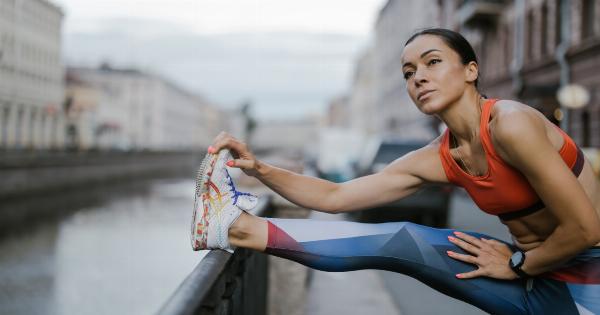Choosing the right athletic bra is essential for both comfort and performance during your workout. Wearing the wrong bra can lead to discomfort, chafing, and even potential injury.
Unfortunately, many women unknowingly wear the wrong bra, which can negatively impact their exercise routine. If you’re unsure whether you’ve picked the right athletic bra for your needs, here are some signs to look out for.
1. Lack of Support
One of the most common indications that you’ve chosen the wrong athletic bra is a lack of support.
A good athletic bra should provide sufficient support to minimize breast movement and reduce potential damage to the Cooper’s ligaments, which can lead to sagging breasts over time. If you notice that your breasts are bouncing excessively or feel unsupported during your workout, it’s likely that your bra is not providing the necessary support.
2. Chafing and Skin Irritation
Another sign that you may have picked the wrong athletic bra is chafing and skin irritation. A well-fitting bra should be made of moisture-wicking and breathable fabric, which helps to prevent friction and keeps your skin dry.
If you experience redness, chafing, or skin irritation around the straps or under the bust, it’s likely that your bra is either too tight, made of a material that doesn’t promote breathability, or both.
3. Digging Straps or Underwire
Uncomfortable and digging straps or underwire are clear indications that you’re wearing the wrong athletic bra.
The straps should not be too tight or too loose, and the underwire (if present) should sit flat against your ribcage without poking or digging into your skin. If you constantly find yourself readjusting the straps or feeling discomfort around the underwire area, it’s time to reconsider your choice of bra.
4. Unpleasant Compression
While compression is an important feature in an athletic bra, there is a fine line between proper compression and feeling too constricted.
If you feel like your bra is squeezing you too tightly or restricting your breathing, it’s likely that you’ve picked a bra with the wrong level of compression. Your bra should provide a comfortable level of compression that supports your breasts without causing discomfort.
5. Bottom Band Riding Up
The bottom band of your athletic bra should sit parallel to the ground and stay in place throughout your entire workout. If you find that the band is riding up, it could mean that your bra is too big or has lost its elasticity.
A loose or stretched-out bottom band will not provide the necessary support and will need to be replaced with a better-fitting option.
6. Restricted Range of Motion
An athletic bra should never hinder your range of motion. If you find that your bra is restricting your arm movement or causing any discomfort when you perform certain exercises, it’s a clear sign that you’ve chosen the wrong bra.
Your bra should allow you to move freely and comfortably without any limitations.
7. Spillage or Quad Boob
Spillage or quad boob refers to when your breasts spill out or are squished by the top of your bra. If you notice this happening, it means that your bra is either too small or doesn’t have enough coverage for your breasts.
The cups of your athletic bra should fully encapsulate your breasts without causing them to overflow or be compressed.
8. Slipping or Sliding
If your bra constantly slips or slides while you exercise, it’s a good indication that you’ve picked the wrong size or style. A proper athletic bra should stay in place during your entire workout, providing stability and support.
If you find yourself constantly adjusting the bra or pulling it up, it’s time to find a better-fitting option.
9. Extended Recovery Period
If you notice that your breasts or chest area feel sore for an extended period after your workouts, it could be a sign that your athletic bra is not providing adequate support. A well-fitting bra should minimize post-workout soreness and discomfort.
If you frequently experience prolonged soreness, it’s worth reevaluating your choice of bra.
10. Overall Discomfort
Last but not least, if you feel overall discomfort while wearing your athletic bra, it’s a clear indication that it’s not the right fit. Your bra should feel supportive, comfortable, and barely noticeable during your workout.
If you find yourself dreading putting on your bra or feeling relieved when you finally take it off, it’s time to find a bra that offers a better fit and improved comfort level.































